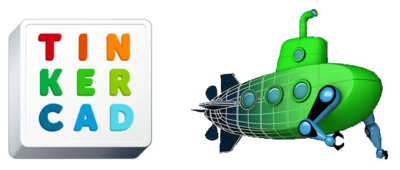Once you’ve got your personal 3D printer working and you’ve exhausted the usual sources of printable models, your faced with a dilemma: how do I create my own 3D models?
You might ask someone trained in 3D modeling, but we think that’s probably not a good idea. We’ve found that pro 3D modelers tend to recommend tools they’re familiar with. And they typically use specific (and expensive) 3D modeling tools that are beyond often beyond your budget and ability to learn. These tools may not even be appropriate for your designs.
So where do you start?
The choice of 3D model tool depends a lot on what you’d like to model. For industrial parts, you’d best use one set of tools, while if you’re developing organic sculptures, another set would be best. There are dozens of possible 3D modeling tools to choose from, each offering specialized capabilities and varying prices.
We suggest avoiding the expensive tools until you’re familiar with 3D modeling concepts and have a deep understanding of your goals and needs. Instead, we recommend starting with inexpensive or free tools that can provide a valuable learning experience, from which you can graduate, if necessary, to a more complex tool.
But which tool should you start with? Here’s our take on several commonly recommended options:
- Tinkercad – Tinkercad is a relatively well-featured web-based 3D modeling tool, easily capable of producing printable solid 3D models. Tinkercad includes a variety of simple design features that beginners may find useful, including an ability to import existing 3D models and save directly to Thingiverse. But there are limits: the free version permits storage of one model for non-commercial use. A paid version is USD$19/month.
- 3DTin – 3DTin is a basic web-based 3D modeling tool. It offers very simple features for creating shapes. It’s somewhat difficult to create true solid models suitable for 3D printing: you must use their “geometry editor”, which has several limitations. Bonus: 3DTin is directly tied into several popular 3D print services, so you can receive a 3D print even if you don’t own a printer.
- 123D Design is a downloadable (or web) application from Autodesk as part of their 123D suite of 3D apps. This tool includes a reasonably complete set of tools, but we found it’s interface is quite representative of higher power tools. It could serve well as a lead-in towards more complex tools. 123D Design is specifically designed to produce solid models, making the production of 3D printable models a simple process.
- Blender – Is frequently recommended as a starting point for new 3D modelers, usually because of its price (free) and amazing array of power tooling. However, it is notoriously difficult to learn and probably isn’t the best bet for a beginner. Blender is primarily designed to create visual 3D renderings, not solid models, making it somewhat more challenging to use for 3D printing.
- SketchUp – SketchUp is often the first 3D modeling experience for many people, but we found its approach to be quite different from most other tools. In other words, if you learn SketchUp, it doesn’t make learning other tools much easier. Drawback: the free version of SketchUp does not produce solid 3D models capable of being 3D printed. You must upgrade to the pay-for version (USD$495) to obtain solid capability.
From those listed above, which tools should be used by the beginner wanting to develop 3D models for printing? We suggest trying either Tinkercad or 123D Design, both of which are excellent tools for the job.


